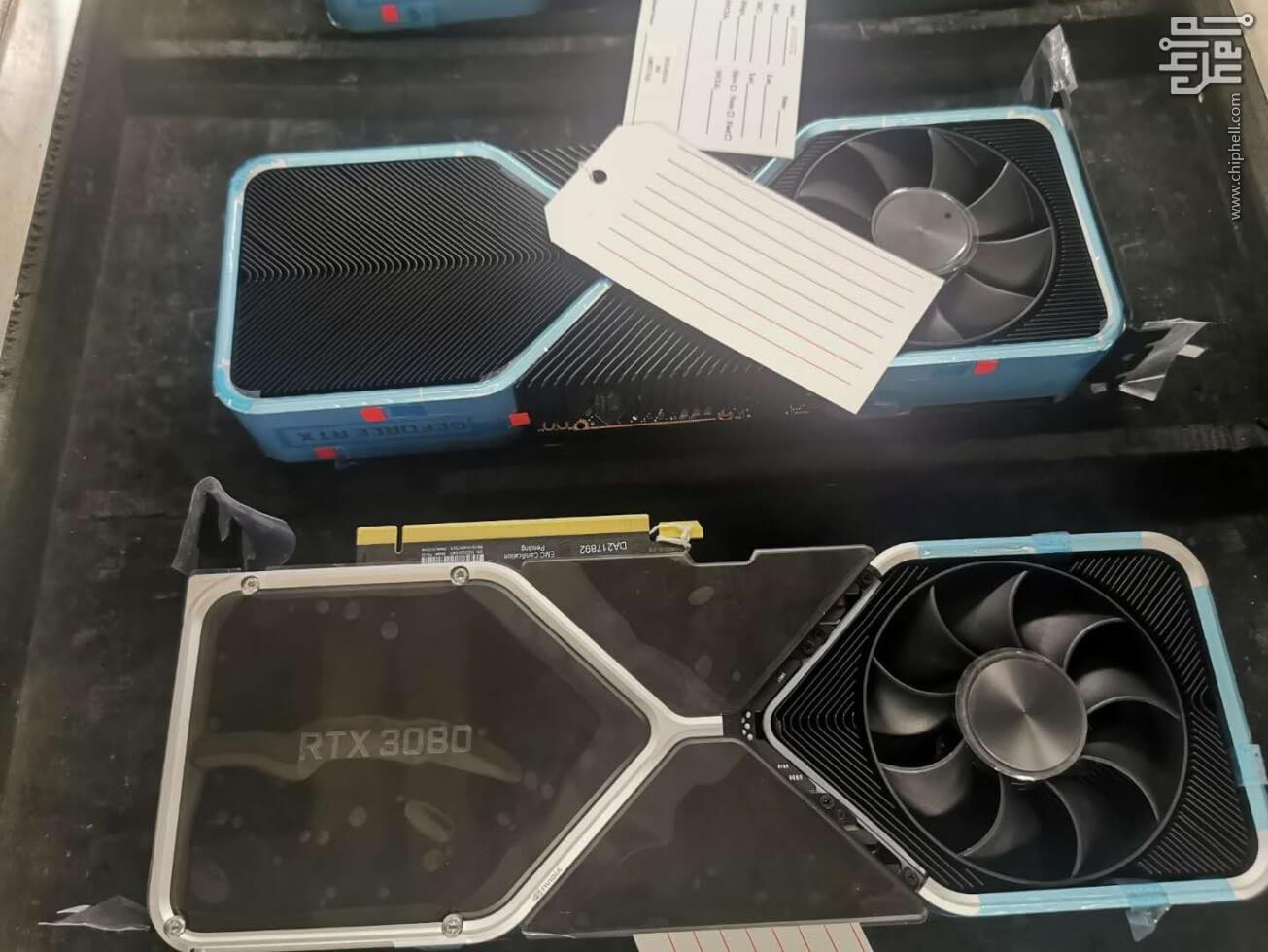In a nutshell: A photograph of two RTX 3080 prototypes has been uploaded to the Chiphell forums, which regularly intercept early hardware designs. New GPU releases rarely innovate much on the cooling front. But if this image is real, then Nvidia has something special, or at least especially perplexing, in the works.
The design of this GPU pair is immediately strange. First, there's one fan on the bottom of the GPU and one fan on the top. Second, the power connector isn't visible, which implies it's on the rightmost surface of the card (on the bottom prototype) which can't be seen from the photos. That's actually where the Quadro GPUs have theirs. But third, and this must be the strangest, the PCB is only two-thirds the length of the chassis and has a triangular cutout to fit the bottom fan.
Observe, however, that these GPUs are in pretty rough nick. The colors are dull, the heat sinks are misaligned and unfiled, and there's no branding apart from the 'RTX 3080' and 'GeForce RTX' logos. They're more likely to be from a minor OEM than be Nvidia reference models. There may be no Ampere GPU in there at all, and these might be pre-emptive designs prototyped ahead of hardware shipments. So although these photos indicate an imminent release schedule at first sight, there's really no telling where Nvidia is in the development cycle.
Is unconventional good or bad?

This cooling solution isn't as unconventional as it looks but is nonetheless quite remarkable. The arrangement of the heatsink fins prevents airflow from traveling laterally across the PCB, which is the opposite of how a normal GPU cooler works. The left fan - which is to sit above the position of the power supply in a regular chassis - pulls air up onto the GPU die then exhausts it out the rear of the chassis (that's normal). The rightmost fan appears to suck air up from the bottom of the case and through a heatsink before exhausting it at the approximate location of the RAM.
This technique is unlikely to provide a direct cooling advantage relative to existing designs. However, because it directs airflow through standardized pathways within the computer chassis, approximately drawing air in from the bottom-front of a case and exhausting it out the top-left, it can use other cooling fans within the computer much more effectively.
Holistically, then, this design could keep the GPU and the air within the chassis cooler than existing designs do if it is well executed. This may be an attempt to differentiate from AMD, or it could signify that these GPUs run excessively hot. This latter theory would contradict rumors that Ampere will offer significant efficiency improvements but supports leaks that suggest flagship Ampere GPUs will have a very high power draw.
Wait, what needs cooling?
Cooling is all well and good, but what needs cooling is more interesting. When it comes to the specifics of the RTX 3080, details are still sparse, or at least well-evidenced details are. But there are two leakers with good track records that deserve recognition: kopite7kimi and KkatCorgi.
A year before its announcement, Kopite leaked the rough die size, transistor count, and memory configuration of the Nvidia A100. By February this year, KkatCorgi knew the exact die size and between the two of them, they created an accurate picture of the A100's final core count. It was impressive.
Fake news 1: I'm not sure, but the PCB of the Ampere game card may be designed to an irregular shape.
--- kopite7kimi (@kopite7kimi) January 20, 2020
Regarding the RTX 3080, they both predicted the unusual PCB months ago. They both believe that the RTX 3080 will have 10 GB of memory operating at a minimum of 18 Gbps, relative to 8 GB and 14 Gbps on the RTX 2080. Kopite speculates that the RTX 3080 will have 4,352 CUDA cores like the RTX 2080 Ti. Nothing either of them say can be verified, however, so it would be unwise to place bets.
